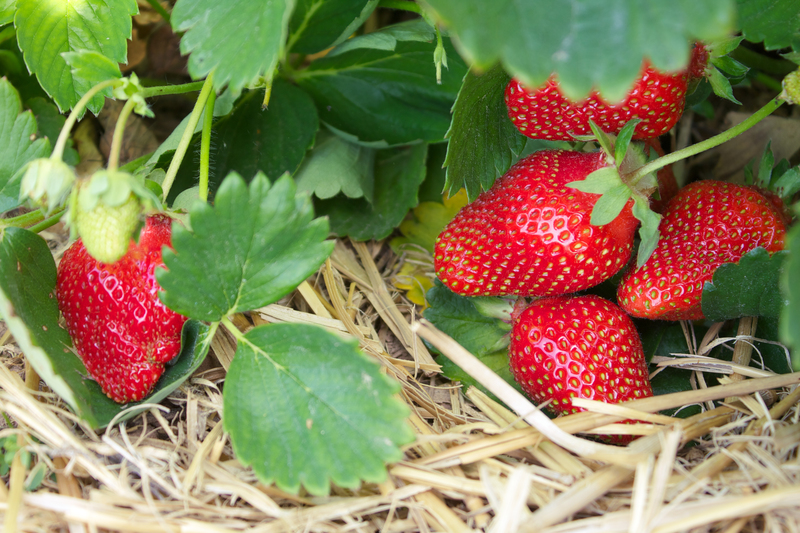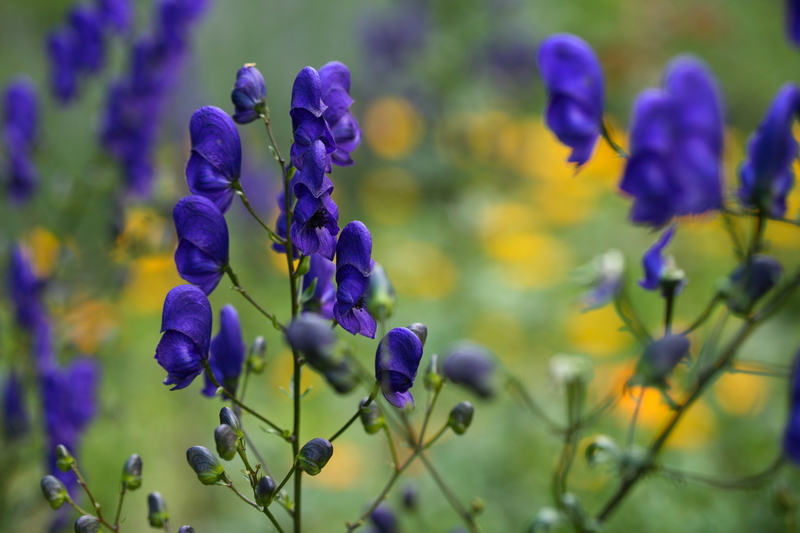From Trash to Treasure: Enriching Soil Naturally
Posted on 02/07/2025
From Trash to Treasure: Enriching Soil Naturally
Turning waste into a valuable resource is not just an eco-friendly trend--it's a timeless practice that gardeners, farmers, and homeowners are adopting worldwide. From trash to treasure, the journey of enriching soil naturally harnesses the hidden potential of kitchen scraps, yard waste, and other discarded materials to rejuvenate the earth beneath our feet. In this comprehensive article, we'll discover practical strategies, scientific insights, and simple solutions for turning everyday waste into a soil-enriching treasure that benefits gardens, communities, and the planet.
Why Enriching Soil Organically Matters
Soil is a living, breathing ecosystem, home to millions of microorganisms and essential nutrients that nourish plants. Unfortunately, modern agriculture and improper waste management have led to soil degradation, erosion, and a decline in soil fertility. By enriching soil naturally, we:
- Improve soil structure and water retention
- Promote healthy microbial activity
- Reduce landfill waste by recycling organic materials
- Lower the need for chemical fertilizers
- Grow healthier, tastier, and more resilient plants
Enriching soil from trash truly is a win-win scenario: you keep waste out of the landfill while creating thriving gardens and landscapes. Let's explore how to make this transformation.

Composting: The Cornerstone of Natural Soil Enrichment
What is Composting?
Composting is the natural process of breaking down organic waste--such as fruit peels, vegetable scraps, coffee grounds, leaves, and grass clippings--into nutrient-rich humus. This humus is a goldmine for gardeners, teeming with minerals, beneficial microbes, and a rich, dark texture that plants love.
Benefits of Compost for Soil Health
- Balances pH Levels: Compost helps neutralize soil acidity or alkalinity, creating the ideal environment for most plants.
- Improves Soil Structure: Compost increases aeration and water retention, making heavy soils lighter and sandy soils more water-holding.
- Feeds Microbial Life: Thriving microorganisms from compost break down organic matter into forms that plants easily absorb.
- Cuts Down on Waste: Up to 30% of household waste can be composted instead of ending up in landfills.
- Reduces Chemical Usage: Healthy soils need fewer pesticides and synthetic fertilizers.
How to Start Composting at Home
- Choose Your Composting Space: Pick a spot that's flat, well-drained, and accessible. Tumblers, bins, or open piles all work, depending on your space.
- Collect Compost Ingredients:
- Greens: Food scraps (fruits, vegetables, coffee grounds), grass clippings
- Browns: Dry leaves, straw, paper, cardboard, sawdust
- Balance Greens and Browns: Aim for a ratio of about 2-3 parts brown (carbon) to 1 part green (nitrogen).
- Maintain and Monitor: Turn the pile every week or two and keep it moist but not soggy.
- Harvest Your Compost: In 2-12 months, depending on conditions, you'll have dark, crumbly, earthy-smelling compost--your soil enrichment treasure!
Tip: Avoid adding meat, dairy, greasy foods, or pet waste to your compost, as these can attract pests and create unpleasant odors.
Vermicomposting: Recruiting Worms for Richer Soil
Vermicomposting is a specialized form of composting that uses red wiggler worms (Eisenia fetida) to convert kitchen scraps and paper into "black gold"--nutritious worm castings. This method produces some of the richest organic fertilizer found in nature, ideal for container gardens, raised beds, and houseplants.
Steps to Begin Vermicomposting
- Build or Buy a Worm Bin: Use a shallow container with air holes and drainage.
- Bedding: Add shredded newspaper, cardboard, or coconut coir as a soft, carbon-rich base.
- Introduce Worms: Red wigglers adapt well to bins and break down food quickly.
- Feed Regularly: Chopped fruits, vegetables, and paper work best; avoid citrus, onions, meat, and dairy.
- Harvest Castings: Every few months, collect the dark, granular castings and enrich your soil naturally.
Vermicompost is particularly effective at improving soil structure and stimulating plant growth, making it a popular soil enrichment technique for organic gardeners.
Mulching: Protect and Nourish Your Soil
Mulches serve a dual role: they both protect and enrich soil organically. When organic mulches such as shredded leaves, grass clippings, straw, or wood chips decompose, they add nutrients back into the earth, keep roots cool, suppress weeds, and prevent water evaporation.
Organic Mulching Best Practices
- Apply 2-4 inches of mulch around plants, keeping it a few inches away from stems and trunks to avoid rot.
- Replenish as Needed: Over time, organic mulch breaks down and should be topped up once or twice a year.
- Use Locally Sourced Mulch: Shredded autumn leaves or wood chips from local tree trimmers are both cost-effective and eco-friendly.
- Boost Soil Life: Earthworms are attracted to decomposing mulch and further aerate and fertilize the soil.
Mulching turns what would often be considered yard "trash" into a valuable resource for natural soil enrichment.
Upcycling Household Trash to Enrich Soil
Did you know many common household items can be upcycled to nourish soil naturally? Consider these creative ways to reuse everyday materials:
Eggshells
Crushed eggshells provide calcium, which prevents blossom end rot in tomatoes, peppers, and eggplants. Simply rinse, dry, crush finely, and sprinkle around your plants.
Coffee Grounds
Used coffee grounds are rich in nitrogen. Add them directly to your compost pile or lightly mix them into the soil. They also help attract earthworms and can deter slugs.
Banana Peels
Banana peels break down quickly and add potassium--an essential macronutrient for flowering and fruiting plants. Chop them and bury them a few inches below the surface near your crops.
Newspaper & Cardboard
Shredded newspaper and cardboard serve as excellent mulch or carbon material for compost piles. Always use plain, black-and-white paper to avoid adding chemical dyes to your soil.
Wood Ash
Wood ash (from untreated wood) supplies potassium and lime. Use sparingly, as too much can raise soil pH. Ash is especially useful for enriching acidic soils.
Green Manures and Cover Crops: Growing Your Own Soil Health
Green manures--cover crops like clover, rye, vetch, and field peas--are grown not for harvest, but to be tilled back into the soil. These "living mulches" recycle nutrients, improve soil fertility, and naturally suppress weeds and diseases.
Advantages of Cover Crops for Soil Enrichment
- Fix Nitrogen: Leguminous plants pull nitrogen from the air, converting it to a form plants can use.
- Build Soil Organic Matter: Their root systems add valuable organic material below the surface.
- Reduce Erosion: Thick cover prevents rain runoff and holds soil in place.
- Recycle Nutrients: Deep-rooted crops bring up minerals from lower in the soil, making them available to subsequent crops.
Sowing cover crops between growing seasons or in bare areas is a time-honored, sustainable strategy for enriching soil without chemicals.
Making Liquid Fertilizers from Kitchen Trash
Not all homemade amendments come in solid form. "Compost teas" and "plant infusions" utilize food scraps to create natural liquid fertilizers that feed plants directly through the leaves and roots.
How to Make Nutrient Teas
- Fill a bucket with compost, chopped banana peels, coffee grounds, or even grass clippings.
- Cover with water and let the mixture steep for a few days to a week, stirring occasionally.
- Strain the liquid and dilute with water (1:4 ratio) before applying to plant roots or leaves.
These nutrient-packed teas provide a quick boost of minerals and beneficial microbes, especially to struggling or newly transplanted plants. Just one more way to turn trash into treasure while enriching soil organically!
Enriching Soil Naturally in Urban Gardens and Small Spaces
Don't have a backyard or large garden? Balcony gardeners, apartment dwellers, and community plot members can also practice natural soil enrichment with a few adaptations:
- Use vermicompost bins under the sink or on the balcony
- Collect compostable materials in a sealed container and bring them to community composting sites
- Apply homemade mulches and liquid fertilizers to container plants
- Grow cover crops or green manures in raised beds or planter boxes
Every effort counts. The more people turn kitchen and yard "trash" into soil-nourishing treasure, the more resilient our urban food systems become.
Common Mistakes--and How to Avoid Them
- Adding Diseased Plants: Never compost plants with visible disease or insect infestations; high temperatures are needed to kill pathogens.
- Using Treated Wood: Mulch or ash from pressure-treated lumber can leach chemicals--avoid entirely.
- Improper Balance in Compost: Too much green material makes compost slimy and smelly; too much brown slows the process.
- Neglecting Regular Maintenance: Stagnant compost piles and worm bins can turn anaerobic--turn, aerate, and adjust moisture as needed.
Learning from mistakes is part of the process--each batch of compost brings valuable insights!

Long-Term Benefits: Building Sustainable, Regenerative Soil
As organic matter in the form of compost, mulch, and green manure is continuously added, your soil will:
- Hold more water, reducing the need for frequent irrigation
- Support stronger, healthier plant roots
- Resist erosion and compaction
- Release nutrients slowly and consistently over the seasons
- Host a vibrant ecosystem of beneficial insects, fungi, and microbes
Ultimately, enriching soil naturally from trash produces a self-renewing, living system that is the foundation of successful organic gardening, regenerative agriculture, and sustainable landscapes.
Conclusion: Your Role in Transforming Trash to Treasure
Every banana peel, coffee ground, autumn leaf, and cardboard box presents a fertile opportunity to enrich soil naturally. By composting, vermicomposting, mulching, and upcycling everyday waste, you contribute to a healthier garden, a more resilient landscape, and a cleaner planet.
The next time you consider tossing "trash," remember: with a little creativity and care, you can transform waste into a treasure that nourishes the earth for years to come.
Start small, stay curious, and enjoy the journey of turning trash into treasure--naturally!


